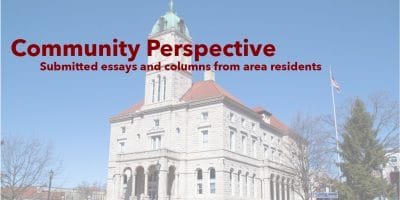By Randi B. Hagi, assistant editor
The Harrisonburg City Council wrestled with the fate of the publicly owned Heritage Oaks Golf Course — but made no decisions — during Tuesday’s meeting as Parks and Recreation staff offered an overview of the course’s finances and operations.
Three Parks and Rec staff members presented financial data regarding the course, which occupies a 191-acre plot between West Market Street, Garbers Church Road and Hillandale Park.
But council member Chris Jones, who last month questioned whether the city should explore selling the course or using its land for other purposes, said that information was not what he was looking for.
Jones said he wanted to know how much the land was worth if the city sold it, what the benefits of closing it might be, and if a portion of the land could be suitable for other uses, such as “workforce housing” that would be affordable for the city’s working families and individuals.
The golf course has operated at a deficit since its soft opening in 2001. According to the city’s Comprehensive Annual Financial Reports, the golf course has lost an average of about $440,000 a year over the last decade. During that time, it has brought in an average annual revenue of about $682,000 while the city spent an average of $1.1 million per year in grounds and club management.
The report for fiscal year 2019 indicates that the course operated at a deficit of $557,644 that year. Revenue for the course has fallen and expenses have risen since 2017. One representative from Parks and Recreation attributed those trends to heavy rainfall that kept golfers away, while replacing aging maintenance equipment inflated expenditures.
The Parks employees, as part of their presentation, said the golf course brings in more revenue than all the other park programs combined.
City Manager Eric Campbell said in his experience from other municipalities, the golf course shouldn’t be expected to make money, regardless of what previous councils or city staff may have said when Harrisonburg’s course opened 19 years ago.
“I’ve seen golf courses be positive community amenities in various communities, and I think we have the same opportunity here,” Campbell said, “but I don’t want to give any false expectations.”
“We know that the golf course is very sensitive,” Mayor Deanna Reed said.
While she, too, wanted more financial and usage data, Reed said she was interested in the prospect of opening up the golf course for more community-wide events.
Jones acknowledged that Parks and Recreation’s job is not to make money, but to offer amenities.
However, “to be able to conscientiously operate at that level of a loss is a bit much for me, because of the amount we’re spending to subsidize golf, let’s say, versus the swimming pool,” Jones explained. “Should we be losing that much in one particular amenity that soaks up so much land, when we only have 17.4 square miles to work with anyway?”
Council member Richard Baugh, who was first elected to the council in 2008, said the golf course was and still is an “incredibly divisive issue in the community.”
“We had an election while this thing was getting built that literally threw out everybody who had voted for it,” he said.
After about a 40-minute conversation, Jones made a motion to direct the city manager to get estimates for an outside consultant to broadly analyze the economic impacts of closing, repurposing, or improving the golf course. The council voted four to one against the motion.
Pano’s building to be town down, eventually
The council unanimously approved the purchase of the Pano’s Restaurant and Lounge property, which closed last year. City Attorney Chris Brown said that staff had negotiated a $2.2 million contract for the 2.52 acre parcel.
The city could use part of the parcel for needed road alterations on Main Street and East Kaylor Park Drive, including for entrances to the second high school that is currently under construction. Staff recommended using the remaining section of the lot as a staging area, then leveling the Pano’s building and selling that section after construction is complete.
Brown said the building was so old that it was no longer usable.
Also at the meeting:
- A delegation of sixth-graders from the Great Oak Academy, which is housed at Thomas Harrison Middle School, gave a presentation, asking for an amendment to the city’s “chicken ordinance” to allow them to have chickens in mobile coops in the school garden. Later in the meeting, Brown said staff would reach out to the Virginia Poultry Federation to make sure the project wouldn’t threaten any local poultry operations and return to council with more information.
- The council unanimously approved the Northeast neighborhood to join the city’s Neighborhood Traffic Calming Program, which will work with residents to come up with solutions to dangerous driving habits in the area.
- The council unanimously voted to change the speed limit on a 0.14 mile strip of East Grattan Street from 25 to 15 miles per hour to prevent traffic from cutting through the street to avoid the stoplight on the corner of Main Street and MLK Jr. Way.
- The council unanimously approved a supplemental appropriation of $1.125 million to further renovate the District Court building. This represents half of the project cost. The other half will be paid by Rockingham County.
Journalism is changing, and that’s why The Citizen is here. We’re independent. We’re local. We pay our contributors, and the money you give goes directly to the reporting. No overhead. No printing costs. Just facts, stories and context. Thanks for your support.














